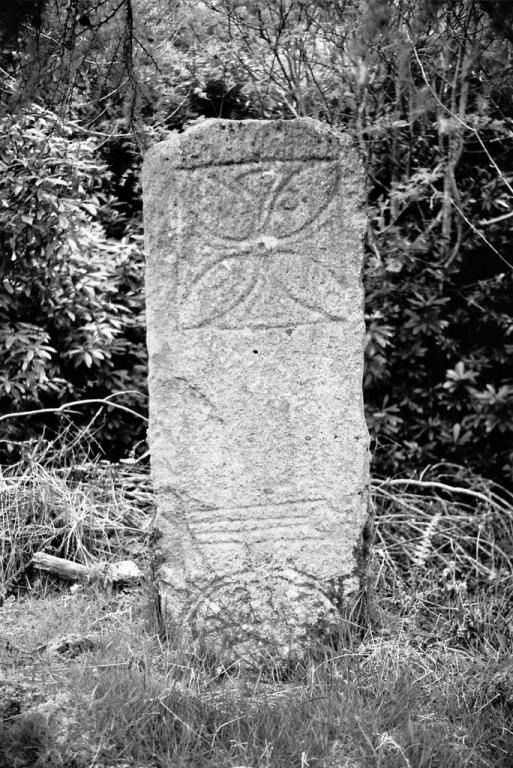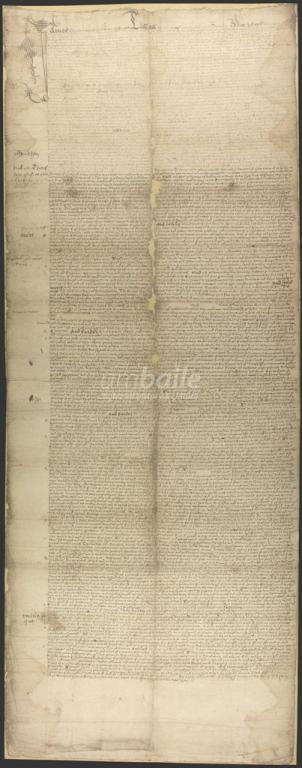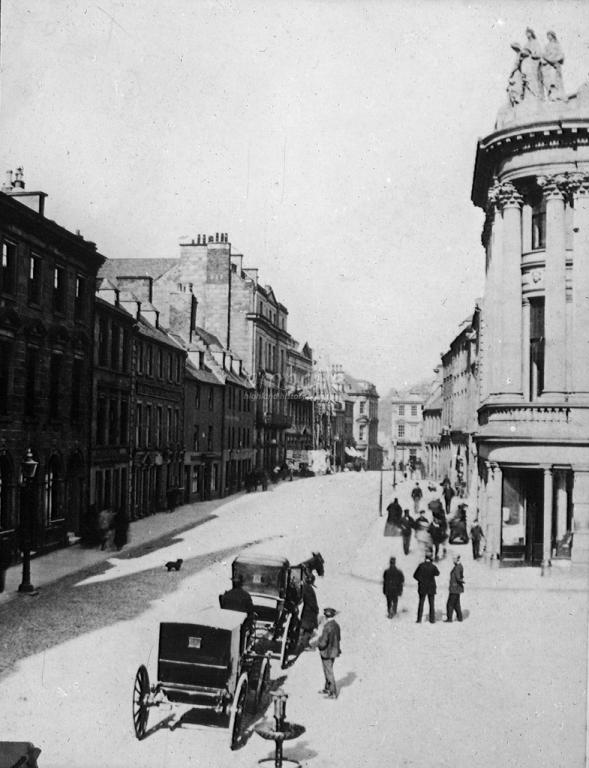
Discovering the 'Spirit' of Continuity
The Spirit of the Highlands and Islands team were delighted to invite students from the University of the Highlands and Islands to volunteer with us over a 6-week period work experience placement. Students were asked to research a topic or theme relating to the heritage of the region which interested them, and develop creative or informative stories based on this research.
In this Spirit: Spotlight, History student Caitlin Jackson writes about her experience volunteering with the project and uncovering the 'Spirit of the Highlands and Islands' in the collections of Am Baile.
I am a fourth year History student with the University of the Highlands and Islands and was first made aware of this project through the university. The appeal of this project was obvious with the opportunity to celebrate the unique spirit of the Scottish Highlands. Bringing together stories demonstrating the culture, heritage, and environment as defined by the people who have lived, worked and visited there, was a fascinating prospect. The creation of a central attraction based at a rejuvenated Inverness Castle to house this project added even more appeal. These stories could cast light on some of the forgotten histories of the highlands and by extension inspire a new generation of visitors to the area.
Getting Started
The brief of this project is a broad one. In trying to capture something so indefinable as ‘the Spirit of the Highlands’ you are free to explore an incredible array of themes and sources to drawn inspiration. As a History student I had preconceptions about what areas and periods I would be most interested in exploring. In my own studies I tend to focus on material culture and the Early Modern Period, so when I began this journey, I had only a general knowledge of Highland life and its history.
My first port of call, being a distance learner, was to investigate the online resources suggested to me by High Life Highland. In particular, the collections of photographs, maps, documents and recordings available through the Am Baile website. As I started with a fairly broad interpretation of the brief it was fascinating to encounter all the possible paths in which I could take this project. The process of researching and writing my stories provided me with the opportunity to not just explore specific topics in the history of the Highlands but to also evaluate the relationships these histories form with the present. I became fascinated with the spirit of continuity that can be observed across these histories and how it could manifest today. To examine this continuity, I chose three key themes: Cultural Integration, Urban Life and Tourism. I set out to examine how these themes, still so relevant, expressed themselves within the history of the Highlands.
Discovering 'Spirit': Cultural Integration and Continuity
One of the first objects I came across on this website was a picture of the Raasay Pictish stone that has been dated to circa 650-700 AD.
This time frame is well before my usual period of interest, but I noted in the description that one of the marks that adorned the stone was the early Christian symbol of the Chi-Ro Cross. I found it fascinating that the Picts would incorporate a Christian symbol in their art. After doing some wider reading into the Pictish people and their interaction with early Christians, I discovered a much more culturally diverse community than I had previous assumed. The ways in which these early Scottish cultures, integrated and assimilated, tell an important narrative about the people who have come before us.
 Image provided by Am Baile/The Highland Council
Image provided by Am Baile/The Highland Council
The Raasay Pictish Stone
A Snapshot of Historic Urban Life
The second object that piqued my interest was a Scots language copy of the ‘Great’ or ‘Golden’ Charter of 1592, which recognised Inverness as a Royal Burgh.
The original document was signed at Holyrood and offers details of international trade, guilds, and fair days, creating a fascinating portrait of life in an urban hub at the turn of the sixteenth century. The popular perception of the Highlands is often one of rural communities, with these hubs of industry, trade and culture going ignored. This charter helps clarify the importance these burghs played in the fabric of the community of the Highlands and how their development affected both negatively and positively their regions. Given the project is to be housed in Inverness I thought this was an interesting link that examined the place of urban life in a traditionally rural landscape.
 Image provided by Am Baile/ Inverness Museum and Art Gallery
Image provided by Am Baile/ Inverness Museum and Art Gallery
The Great Charter of Inverness, 1592
The Paradox of Highland Tourism
The final object I decided to focus on for the project was a photograph of Inverness High Street from 1870.
The photograph in question shows the ‘Grant’s Tartan & Tweed Warehouse’ building. In the description it was noted that this was one of a number of businesses that aimed to exploit the growing tourist trade that had been developing across the century. I found this a fascinating link to the project, that itself is aimed at attracting touring visitors.
It is widely known that as infrastructure improved across the Highlands in the nineteenth century, particularly that of the expanding rail network, adventures in the Highlands became a popular pastime for the upper and middle classes. What I found particularly fascinating however when searching for wider context was the critical debate of the perception of the Highlands. In particular, the romance of the Highlands as a remote paradise free from the consequences of the industrial revolution and how this functioned in practice. This is still an issue so relevant to those working within the heritage sector, that it seemed like a wonderful opportunity to explore.
 Image provided by Am Baile/Inverness Museum and Art Gallery
Image provided by Am Baile/Inverness Museum and Art Gallery
Photograph of Inverness High Street, 1870
Final Thoughts
Being in the final year of my degree, I have been considering what life after university would hold and this opportunity was invaluable in gaining insight into how such a wide scale public history project can function and engage with the wider community. Volunteering with this project also gave me the chance to gain first-hand experience in archival research.
I began this project with the broad expectation to learn more about the culture and experience of life in the Highlands. Over the course of this project however I discovered many misconceptions that I held about life in the Scottish Highlands. Ultimately, I concluded that, there is a wealth of unseen stories that could be told about the Highlands and the spirit that defines it and I am sincerely grateful to have received the opportunity to contribute to a project aiming to do just that.
Though my original intention was to spend time in the Highland Archive Centre while completing my research this proved to be impossible due to the pandemic. I am exceedingly obliged that the technology and digitised collections allowed me the opportunity to still participate. The wealth of perspectives this research has granted me insight into has been fascinating and challenged me to think critically about my own perceptions.
Caitlin Jackson